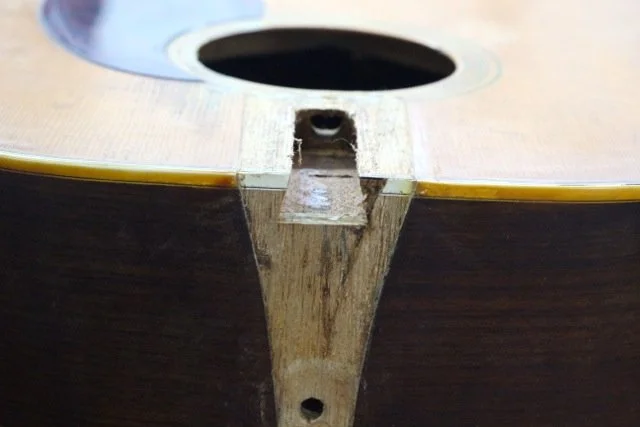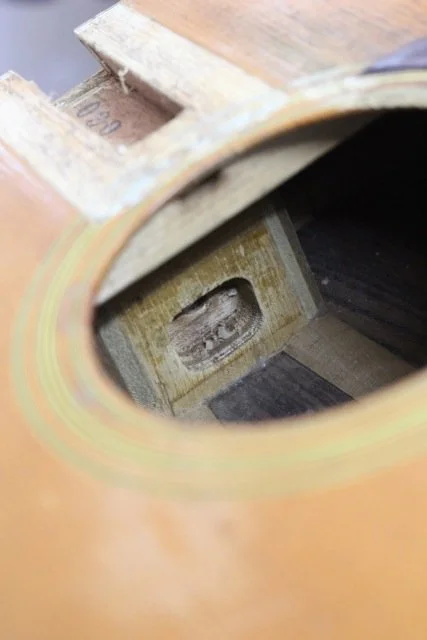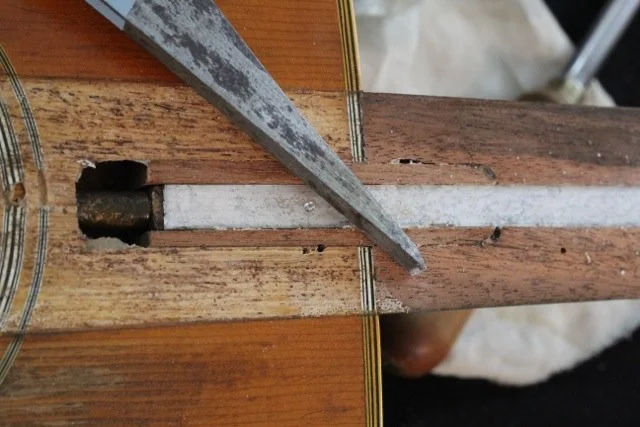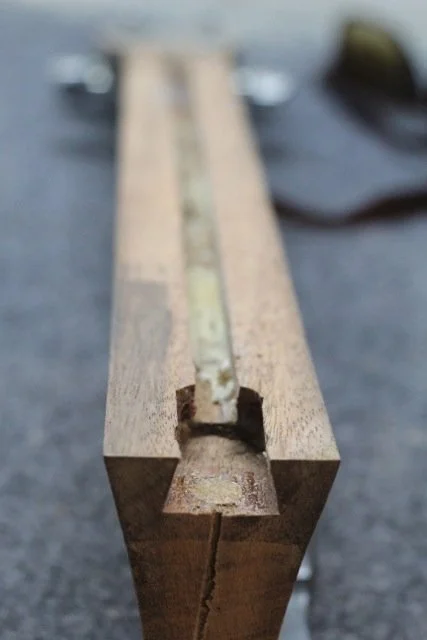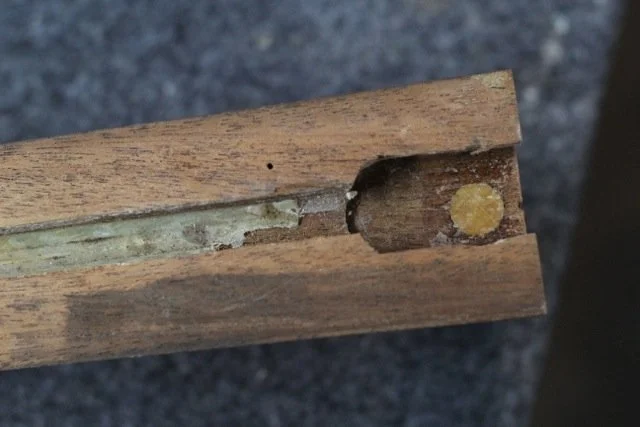Repair Info
The aim of this page is to collect carefully vetted and verified information on how these guitars were originally constructed, along with notes on their strengths and weaknesses from a repair and restoration standpoint. Whenever possible I will include pics that clarify one or another point that would be otherwise difficult to describe in words
332 Thinline Pickup info
Courtesy of kevinm
For techs who haven’t encountered one before, the very first question when dealing with a Shenandoah coming in for a neck reset is “what kind of neck joint am I dealing with here?” One possible answer to that question is in the pic below, which was taken from the four color glossy Shenandoah catalog published in 1989
Two things are immediately apparent. The first is that the pic shows what looks very much like a standard Martin tapered dovetail joint. The second is that the fellow entrusted with this critical step in the building process appears to be 100% in tune with the fashion trends of his day. But I digress….
If a standard tapered dovetail was used on all of the Shenandoahs assembled in the Martin factory in Nazareth PA without exception, then that would surely take some of the load off a repair person’s mind. If only things were that simple….
The first issue is whether or not the pic shown above can be trusted. To be blunt, it was taken for the purposes of advertising, not helping out some anonymous repair person 30 years in the future and in my mind that makes it automatically suspect. Johnston & Boak wrote in their definitive Martin Guitars: A Technical History that Martin had begun making small numbers of experimental models with maple back and sides all the way back in 1986. The catalog that features Mr Stylin’ fitting the neck joint of the Mystery Dread was printed only three years later, in 1989. The same catalog announced the brand new Shenandoah model D-6032 which featured birdseye maple back and sides, plus the equally new model D-6732 which featured quilted ash back and sides. So which kind of dread is that on the bench? Absent any other info, there’s no definitive answer. Fortunately, better evidence is available
The pics below show one of the kits made up from unassembled parts that were left over after Shenandoah production ended at Nazareth. Careful consultation with many highly respected members of the AGF and the UMGF forums suggests it is near-certain that any Shenandoah with a Martin-style 6 digit serial number will have a neck joint just like it. Be aware, though, that this may or may not not be the case with Shenandoahs that have serial numbers with letter prefixes or suffixes. Such instruments were entirely Made In Japan, and the actual manufacturer in Japan changed to a completely different company at least once
Additional supporting evidence is provided by a very interesting thread on the UMGF
That said, nothing in life is 100% certain, as we can see below ….. FWIW the serial number indicates a very early production date, and it is also noteworthy that the contributor who sent me these pics mentioned that there was a bolt hidden in that pocket underneath the maple plate bearing the model and serial numbers



